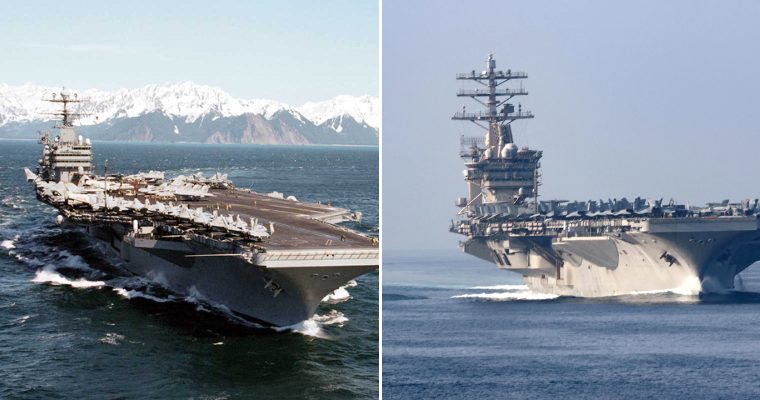President Biden’s brusque refusal to fulfill Ukraine’s request for F-16 jets has been greeted with skepticism at the Pentagon, where some officials, citing the administration’s pattern of reversal after first rejecting other pleas from Kyiv, foresee eventual approval or a scenario where American allies provide the aircraft with administration approval.

U.S. Air Force personnel signal to the pilot of an F-16 Fighting Falcon on a military flight line in Romania last year. (Us Air Force/via REUTERS)
The conjecture among U.S. defense officials follows the commander in chief’s one-word response on Monday when a reporter asked outside the White House if he would send F-16s to Ukraine. “No,” Biden replied.
One senior defense official, who, like some others interviewed for this report, spoke on the condition of anonymity to discuss internal deliberations, said that while the Pentagon’s calculus was unlikely to shift soon, there remains a possibility that the discussion could be “M1-ed,” a reference to Biden’s recent commitment of M1 Abrams tanks after administration officials suggested for months that the sophisticated arms would be too complex for Ukraine to maintain.
Another senior defense official acknowledged that there is growing frustration in the Pentagon among those who want to do more to help Ukraine but find their views stymied by others who favor a more cautious approach. This official said that while Defense Secretary Lloyd Austin and some of his senior staff were reluctant to approve the Abrams tanks and, weeks before that, the advanced Patriot missile system, Biden eventually did so.
A Pentagon spokesman, Brig. Gen. Patrick Ryder, said that the United States and its allies have provided near-term support to “sustain and bolster Ukraine’s existing air capability” and that they are consulting with Ukraine on its long-term needs. The Pentagon said in April that some allies had agreed to provide spare parts for planes that Ukraine already had.
“The war remains fluid and dynamic, so the nature of our support will continue to adapt and evolve as necessary to give Ukraine the training, equipment and capabilities they require to be effective on the battlefield,” Ryder said.
The Ukrainian request for additional fighter jets dates to the war’s opening weeks, nearly one year ago. The country’s air force then had a few dozen Soviet-designed MiG-29 fighters, bolstered by smaller numbers of Su-24, Su-25 and Su-27 jets. Ukrainian pilots have flown them sparingly while facing a complex array of Russian surface-to-air missiles, and some have been shot down.
An assessment of the air war over Ukraine by the Royal United Services Institute in London found that Russian pilots have remained “highly effective and lethal” against their Ukrainian counterparts, thanks to long-range missiles on their aircraft and superior technology overall. Ukrainian air defenses, infused with newer systems from the West, also have improved, prompting the Russian air force to keep its distance from the battlefield, the assessment found. It suggested that even a small number of Western fighter jets could have a significant deterrent effect, even while facing Russian air defenses.
In late January, Ukraine’s president, Volodymyr Zelensky, told a gathering of U.S. and European defense leaders in Germany that they must act quickly to supply his government with tanks, long-range missiles, air defense systems and F-16s. Days later, agreements were reached to send the tanks. Other requests, for now, remain elusive.
The Ukrainians want the F-16, in part, because there are more than two dozen nations that fly them, creating a large pool of potential donors, said David Deptula, a retired Air Force lieutenant general. Given the limited number of aircraft and spare parts available with the MiG-29, he said, Ukraine will need to adopt a Western aircraft at some point.
“What Ukraine needs is a game changer, and that’s air power,” said Deptula, the dean of the Mitchell Institute for Aerospace Power Studies. “We have to stop asking what will happen if we provide air power, and start asking what will happen if we don’t.”

American F-16s prepare to land at an air base in Morocco. (Fadel Senna/AFP/Getty Images)
If the Biden administration had begun training experienced Ukrainian pilots how to fly the F-16 last year, they would be using it in combat already, Deptula assessed. He estimated that a fighter pilot with training on other aircraft could learn how to operate the platform within a few months.
Another retired Air Force general, Herbert “Hawk” Carlisle, said he also favors sending F-16s to Ukraine and beginning pilot training, albeit starting with a small number of experienced pilots and assessing their performance before expanding the program.
Carlisle, who chairs the board of directors at the Stimson Center think tank, said Ukraine would also face challenges in maintaining the planes. But “it’s not insurmountable.” To ease such a burden up front, he said, he would recommend sending planes that have recently undergone significant maintenance.
Other analysts are wary of the Biden administration continuing to increase its involvement in the war. Daniel Davis, a retired Army officer and senior fellow with Defense Priorities, said that it is unreasonable to expect that Ukrainian pilots can master the F-16 in just a few months and that the continued threat of Russian air defenses makes it unlikely that the jets are a game changer.
“Even American F-16 pilots would struggle against Russian air defense,” he said. “There’s no reason to think that they’re going to be impervious to that.”
Davis said he does not believe the provision of F-16s alone would prompt Russia to escalate its war, but if Ukraine threatens to take back the Crimean Peninsula that Russia annexed illegally in 2014, Moscow could take drastic measures.
“This is a different set of rules, and if you don’t realize that you’re dealing with a nuclear power, you are putting us in danger,” Davis said. “It’s reckless to the highest degree.”
Source: washingtonpost.com








